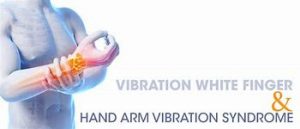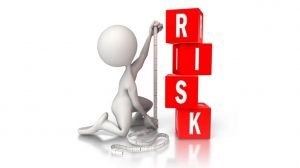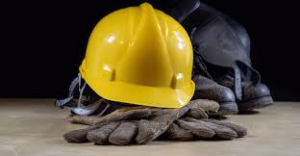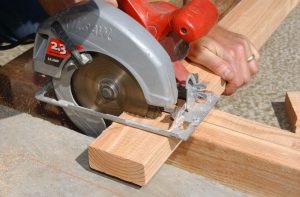
An employer’s guide to Hand-Arm Vibration Syndrome (HAVS)
Hand Arm Vibration Syndrome (HAVS) is a progressive condition that can affect a person’s hands and forearms following prolonged exposure to vibration.
Employers owe a duty to their workforce to take all reasonable steps to reduce the risk of workers developing HAVS, including regular safety assessments, training and providing suitable PPE.
Employers owe a particular duty of care towards staff who have, or may have, a higher risk of developing HAVS due to a history of working with vibrating tools.
HAVS can manifest in a range of debilitating symptoms, including:
HAVS symptoms can get worse over time, even after the affected person stops using power tools entirely. The condition can be extremely serious and can affect someone’s daily life and ability to work.
A HAVS sufferer may be unable to work in cold or wet conditions, carry out fine motor tasks or do any work requiring the use of fingers (such as typing). The severe symptoms of HAVS can make it difficult for affected workers to easily retrain.
The condition can have painful vascular effects that can lead to Vibration White Finger (VWF) and nerve damage. Carpal Tunnel Syndrome is also associated with vibration exposure and can exist alongside HAVS.
Generally speaking, HAVS risk increases with the strength of the vibration and the duration of use, both in terms of the length of time a tool is used before a break, and the overall time that vibrating tools are used.
However, any employee who uses vibrating tools or equipment, for any length of time, is potentially at risk.
Construction workers are particularly likely to be at risk, but the risk to workers in other sectors, including rail and road maintenance, manufacturing and gardening/estate management should also be assessed.
Jackhammers, road breakers and hammer drills are obviously harmful if overused, but almost all power tools carry some degree of vibration risk. Handheld grinders, chainsaws, lawnmowers and strimmers carry a risk of harm, as can stationary saws, drills and sanders.
Employers also owe a duty to accommodate and protect workers who either already have a disability that could put them at greater risk, or who have a history of vibration exposure.
A company must identify workers at greater risk, and take steps to protect them from further harm. A ‘one size fits all’ approach to vibration exposure management is rarely suitable.
The Control of Vibration at Work Regulations require companies to manage vibration-related health and safety risks. As an employer, you must ensure that employees’ exposure to vibration at work is reduced to a minimum, wherever it is reasonable and practical to do so.
In practice, the law recognises that some degree of exposure is inevitable for some workers, including any staff that use vibrating power tools or machinery as a part of their job. It is the employer’s responsibility to regularly assess, monitor and act to reduce this exposure.
Employers’ legal duties include:
As with other areas of health and safety law, such as noise-related regulations, there are fixed levels of exposure at which an employer must take action.
Vibration exposure limits are called the exposure action value (EAV) and the exposure limit value (ELV). These limits are measured using an A(8) value. The A(8) value is the average exposure over an 8-hour workday.
The EAV has a A(8) value of 2.5 m/s2. This represents a piece of equipment’s vibration or movement per second. If an employee is exposed to A(8) value over 2.5 m/s2, their employer must act to reduce exposure as much as possible.
The ELV is 5 m/s2 A(8). This represents the absolute limit of daily exposure that employees must not exceed.
Manufacturers will usually publish the vibration values of their equipment, but the method for calculating a tool’s A(8) value from its rating is not obvious.
Online calculators are available to help you work out A(8) values for different tools and how they should be combined to calculate a worker’s overall risk.
The two key ways to protect workers from vibration-related injury are:
In addition, vibration risk can be reduced by properly maintaining vibrating equipment. Older gear should be replaced if possible. Newer products generally have lower vibration ratings, meaning they can be used for longer. Consumables like abrasive discs should be suitable (i.e. those recommended by the manufacturer), and regularly replaced.
The HSE takes a somewhat sceptical position on the effectiveness of PPE like anti-vibration gloves. Even CE and ISO-certified gloves may actually increase vibration risk under certain circumstances, so gloves should not be treated as a quick-fix solution.
The risk of harm is greater in cold weather, so suitable gloves could be worn in such conditions.
Receiving notification of claim from an existing or past employee can come as a shock to an employer. Compensation claims can be disruptive to a business and can impact morale at a firm.
Your immediate concern should be the well being of the employee as well as ensuring that other employees are not at similar risk of injury.
Chris Salmon, Director of Quittance said, “Most claims do not go to court. Instead, they are a process of a negotiation between the claimant’s solicitor and the employer’s insurer. At certain stages, the insurer will ask you to provide information and respond to assertions made by the claimant’s solicitor.”
“Try to maintain constructive communication with the injured employee or ex-employee from the outset. This approach can have a positive effect on the outcome, and should reduce the likelihood of acrimonious court action and knock-on consequences for company morale.”
On receipt of a claim notification form, you should:
Attributing liability for an occupational disease can be complicated. HAVS can be gradually contracted from prolonged exposure to vibration at a number of previous employers.
If the employee was exposed to vibration at previous or concurrent employers, a split liability agreement may be reached. Under such an agreement, compensation may be shared between your insurer and the other employers’ policies.
It could be that the employee is partially responsible for the condition. If, for example, the employee repeatedly failed to take mandated breaks, it may be argued that they contributed to the condition and compensation might be reduced.
Contact us if you require further advice.
Guest Speaker – Chris Salmon Director and Co-Founder of Quittance Legal Services

Ways to improve your forklift truck safety this winter
Forklifts come with risks no matter what the time of the year. However, when the winter brings cold, wet and icy weather, the risks can significantly increase. Kelly Friel is the Digital Product Manager from PPE and tool retailer, Zoro. Here, she explains how you can improve your forklift truck safety during the colder months.
If you work in construction or warehousing, forklifts can be a lifeline to your daily duties. But, while they can be incredibly useful in shaving down labour time and removing the need for workers to move heavy materials, they can pose a lot of health and safety issues. According to latest statistics reported to the HSE, some of the main causes of worker fatality include being struck by a moving vehicle (20%), trapped by something collapsing or overturning (15%), and contact with moving machinery (11%) — all of which are possibilities when working with, or around, powerful machinery like forklifts (Workplace Fatal Injuries in Great Britain, 2020).
And, with winter on the horizon, the conditions on your construction site or yard could soon become treacherous. Not only does this directly affect forklift truck drivers, but also the workers around them. Here, I’ll be sharing my top tips for improving your site’s forklift truck safety during the colder months.
Knowing how to properly operate a forklift, and how to deal with any problems that arise, will be key to safety on the site for everybody. With slippery surfaces, reduced lighting and strong winds to contend with during winter, your forklift truck drivers may need some additional training, particularly if you’re planning to add extra safety measures around the site, such as a new route for machinery. Similarly, ensuring they know exactly what checks to carry out at the beginning of each shift, and are aware that they’ll need to give the forklift some time to warm up before operation, will be imperative to safe and optimum usage.
As well as this, you also might want to impose some restrictions on forklift usage. For example, while it might not be productive to limit the hours the forklift can be used, limiting the speed at which it can travel after a certain time and in particular conditions can improve the safety on site for everyone. You could even implement some speedbumps to ensure drivers stick to these limits and are warned for when coming up to particularly dangerous zones.
If you’re unsure on the additional training you’ll need to give, finding a consultancy that offers guidance and health and safety training, like Walker Health and Safety Services, will ensure you’re identifying and managing all potential risks for your workers and site visitors.
Before you let your workers carry on their duties, it’s imperative that you have done the necessary checks and changes to your forklift to ensure it’s fit for purpose during the winter. This could include investing in some durable forklift covers that will shield it from wind, rain, ice and other elements, which could impact its usual functioning. These covers can vary from metal cabs to plastic canopies, and the type you choose will depend on where your forklift is stored and, consequentially, how much extra protection and shelter it’ll need.
For construction sites, you’ll want to consider changing the tyres to ones that are suitable for challenging weather conditions. These tyres have greater traction, so won’t be as phased by wet and icy flooring around your site, reducing the chances of your forklifts skidding and causing damage or injury. For machinery that regularly goes between indoor and outdoors, you might even want to consider buying some pneumatic tyres that handle slippery floors better. These are typically best for forklifts that are lifting heavyweight materials, such as bricks, so you may need to add some tyre chains and studs to offer extra traction.
It’s important to remind workers that during these wetter months, it’s key for them to clean the forklift down after every shift. This will help to remove any build ups of dirt and debris. And, by drying the forklift’s body before storing it, they’ll also be able to spot and get rid of any rust. Each forklift will have specific care guidelines, so make sure your workers are following the daily and weekly checks outlined in the operator’s manual to keep your forklifts in great condition.
As an employer, it’s a legal requirement for you to adhere to the advice given in the Personal Protective Equipment at Work Regulations (1992). So, you no doubt already supply your workers with a sufficient amount of protective clothing when they’re on site. However, with new health and safety risks arising in the colder months, it may be necessary to take a look at what PPE is missing to protect your staff from these problems, including cold stress.
For example, it is not uncommon for cold weather to wreak havoc on your workers’ body temperatures, meaning they can have trouble regulating it when spending time outside. For this reason, it’ll be important to ensure your workers are wearing lots of thin layers rather than thicker ones, so they can choose when to take off or add layers, and can do so comfortably. The clothes your workers wear will need to stand up to the elements, so investing in some weather- and windproof materials, such as Gortex and nylon, will help them to keep warm when out on the job. Similarly, providing thick, insulated gloves and leg warmers will be key.
As the evenings draw in earlier, and we have reduced hours of daylight, it’ll be incredibly important to ensure the high-visibility PPE you offer are more than sufficient. High visibility clothing is split into three categories, with class 1 offering the most basic level of protection and class 3 offering the most. For your construction site in winter, you’ll want to invest in class 3 for everybody, even if you’ve increased extra lighting around the site. This is so forklift truck drivers can be seen and so can other workers around the site, to reduce chances of injury or fatality.
You’ll need to look beyond the safety of your forklift and ensure that your site is also safe. For example, you may need to invest in some extra lighting for the darker hours your workers will be working in. These could be floodlights or tower lights depending on the size of your site and how much additional lighting you’ll need.
If you’ve set up separate routes for pedestrians and your forklifts to travel around, you’ll need to sufficiently highlight which path is for who. So, additional signage will be key.
When the floor is particularly wet and slippery, remembering to grit it regularly, including at the beginning of each working day and a few times during the day, to reduce the amount of accidents for workers and forklift operators.
Protect your forklift operators and the rest of your workers from injuries and fatalities by taking the time to think about the risks associated with cold weather and how to tackle these.
Contact Walker Health and Safety Services if you require further information.
Guest Blogger – Kelly Friel from Zoro.
 The short answer is “because it’s every employer’s duty”. Being an employer is about much more than just obeying the letter of the law. You also want to make your workforce is as productive as possible and you need to attract talented people by being a good place to work.
The short answer is “because it’s every employer’s duty”. Being an employer is about much more than just obeying the letter of the law. You also want to make your workforce is as productive as possible and you need to attract talented people by being a good place to work.
The bottom line is that employers have a legal obligation to manage health and safety in the workplace. That means controlling risk. Risks can only be controlled once they have been identified and quantified.
That’s why it’s the responsibility of every employer to conduct a health and safety risk assessment. Defining the hazards present in the workplace so that action can be taken to manage them.
The law is crystal clear on this point. Businesses with five or more employees must not only conduct a risk assessment, but also record the findings in a written report. This information must be shared with employees carrying out the tasks that have been assessed, including those that may work in the same area.
Organisations with fewer than five employees are still required to assess the risks in the workplace. There’s no obligation to write the results down, but there’s a strong case for doing it anyway. Creating a written report clarifies matters, focuses minds and makes it much easier to update the assessment when things change, for example, if there is a new process or new equipment is introduced.
If you are confident you understand the risks in your workplace, you can conduct your own workplace risk assessment, however if you’re in any doubt about any aspect of the assessment or the level of risk, it’s wise to call in the experts. Conducting expert risk assessments is a key aspect of the service available from Walker Health and Safety Services Limited.
Before deciding whether you need expert advice, consider the worst-case scenario. Imagine finding yourself in court because of a Health and Safety incident in your workplace. That’s when an inaccurate or incomplete risk assessment can cost you a big fine, and perhaps even close the business down.
If you need to conduct a risk assessment or are not sure the one you have in place is fit for purpose, don’t hesitate to contact Walker Health and Safety Services Limited for advice.
 Personal Protective Equipment (PPE) is provided by employers so employees can carry out their job. There are responsibilities that employees must take responsibility for when dealing with PPE. See previous blog Link.
Personal Protective Equipment (PPE) is provided by employers so employees can carry out their job. There are responsibilities that employees must take responsibility for when dealing with PPE. See previous blog Link.
The PPE Regulations stipulate that companies are unable to charge for PPE (under section 9 of the Health & Safety at work Act 1974 – see ACOP link below).
28 Under section 9 of the HSAW Act, no charge can be made to the worker for the provision of PPE which is used only at work. Section 9 of the HSAW Act states:
‘No employer shall levy or permit to be levied on any employee of his any charge in respect of anything done or provided in pursuance of any specific requirement of the relevant statutory provisions’. Section 9 applies to these Regulations because they impose a ‘specific requirement’, for example to provide PPE. It also relates to all charges including returnable deposits. An employer cannot ask for money to be paid to them by an employee for the provision of PPE whether returnable or otherwise.’
29 If employment has been terminated and the employee keeps the PPE without the employer’s permission, then provided it has been stipulated in the contract of employment, the employer may be able to deduct the cost of replacement from any wages owed.
From guidance, levy’s or deposits are not be appropriate, so therefore we would deter this course of action.
If PPE is constantly being asked for as it is defective, consider discussing defective wear with the supplier or the manufacturer. Request a credit or replacement FOC as they are not fit for purpose under Trading Standards.
If employees are asking for frequent replacement of PPE, consider looking to discreetly mark the item with UV marker pen with a serial number much the same as asset tags on company property to check that the item presented for replacement are those that were recently issued.
If there are repeat offenders this would need to go down the HR disciplinary route.
Contact us should you wish to discuss this topic.
 Potential Circular Saw Safety Mistakes
Potential Circular Saw Safety MistakesIt is statistically shown that more severe, debilitating injuries occur from the table saw than any other woodworking machine or power tool. When it comes to handheld woodworking power tools, the circular saw may take that crown as the most dangerous.
Safety Equipment
While using a circular saw always remember to wear the safety equipment. Never forget things like
These common safety protections will reduce the chances of accidents. Don’t take them too lightly. They sound silly, but one of the most major facts of the circular saw safety guard.


If put down incorrectly, the user could get injured. Do not put the saw down before it has stopped moving. Place the saw on its side, and you’ll avoid this problem entirely.
I feel like this one is obvious once you think about it, but not something we ever stop and actually think about. If your finger is on the trigger and you trip and fall, you might press the trigger and start the saw, which would probably have bad consequences. Find another way to carry your saw.
This seems like a good idea. If your piece is supported and clamped on both sides, then nothing will fall to the floor when you’re done cutting. I suppose that logic is technically correct, but you’ll rarely be able to finish cutting without encountering kickback. The two pieces sag toward the middle as you finish the cut, pinching the blade and causing kickback.
If kickback occurs, the saw will fly right into you. Stand a little to the left or right, therefore if kickback occurs, you wont be directly hit by the saw.
This increases the likelihood of kickback. Enough said.

This is bad for a couple reasons: A) The more saw that needs to go through the wood, the harder the saw has to work. The harder the saw has to work, the more likely it is to kickback. Keeping the saw at the appropriate depth therefore reduces kickback. B) The deeper the saw, the more the blade will be exposed. This increases the likelihood that it will come in contact with a human appendage.

The appropriate saw depth is 1/4″ more than the piece you’re cutting. Any deeper, and you’re setting is too deep!
Yes, wood has splinters, and gloves seem like a good idea. But they increase the risk of your hands getting caught in the saw, so they are a big no-no when operating any power tool.
I hope there was at least one thing on this list you learned about operating a circular saw, and the circular saw safety mistakes people commonly make. If so, make sure to subscribe to my email list; I plan to do a whole sequence of posts for all sorts of power tools, so make sure you don’t miss out!
Tips
Contact us if you wish to discuss this topic.